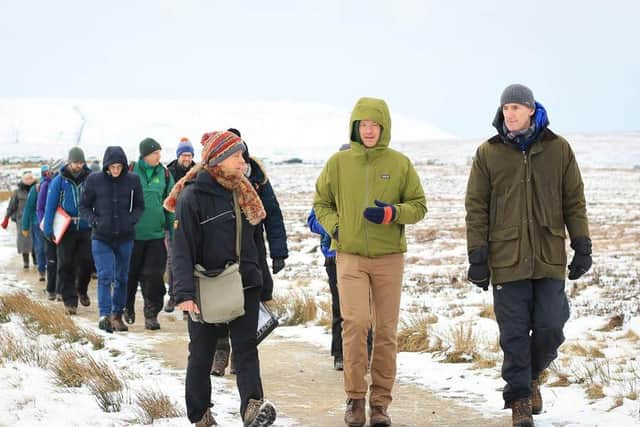US environment experts visit Peak District to learn about climate and biodiversity work
and live on Freeview channel 276
Climate and policy analysts, biologists and forestry experts from four states spent four days learning from representatives of the national park authority and partners including the Staffordshire Wildlife Trust, Natural England and the Moors for the Future Partnership.
The visitors were given a hands-on insight into more than 20 years’ of upland conservation restoration across the Peak District and South Pennies, which has turned around the fortunes of vast areas of previously degraded habitats.
Advertisement
Hide AdAdvertisement
Hide AdA group excursion to the Pennine Way provided an example of looking after a ‘semi-wild’ landscape with understanding of best practice managing sites so close to both industry and dense populations, and elsewhere delegates were also introduced to projects on local estates backed by the Defra Farming in Protected Landscapes (FiPL) Programme.


Phil Mulligan, chief executive at the Peak District National Park Authority, said: “Not only is the Peak District the UK’s first and pioneering national park, but we are also part of a national and global family of protected landscapes.
“Wherever you are across the planet, these vital places have the same myriad challenges and opportunities that come with caring for the world’s most treasured habitats and wildlife.”
He added: “Where we may lack in sheer geography compared to our US counterparts, a ground-breaking approach to conservation at an ambitious scale for the UK, means we have plenty to share in terms of knowledge and understanding – and I’m delighted that we’ve been able to welcome the US team alongside some of our other local partners.”
Advertisement
Hide AdAdvertisement
Hide AdThe knowledge exchange was part of the 30by30 programme, a worldwide initiative for governments to designate 30 per cent of Earth's land and ocean area as protected areas by 2030.
Both the US and UK governments have declared their commitment to deliver on 30by30 targets, with a particular focus on halting species loss and ecosystem protection alongside climate change mitigation and economic security.
Jennifer Norris, deputy secretariat for biodiversity and habitat at California Natural Resources Agency, said: “We were impressed and inspired by the incredible work underway by so many different partners across the Peak District National Park.
“The scope and scale of restoration work is truly breath-taking. Your partnership approach has motivated us all to do even more to protect biodiversity and address climate change back home in the US, especially as part of the much wider global picture where we can all play a role.”
Advertisement
Hide AdAdvertisement
Hide AdThomas Christensen, climate policy lead at the British Consulate in Los Angeles, added: “It was wonderful to see UK and US collaboration on rolling out ambitious restoration efforts, rural economy growth and climate change mitigation action to achieve the 30 by 30 target.
“Colleagues from California, Maine, Michigan and New Mexico were impressed about the Peak District's large-scale peat restoration and sharing their own lessons and expertise.”
To learn more about climate adaptation in the national park, go to https://bit.ly/3llwngt.